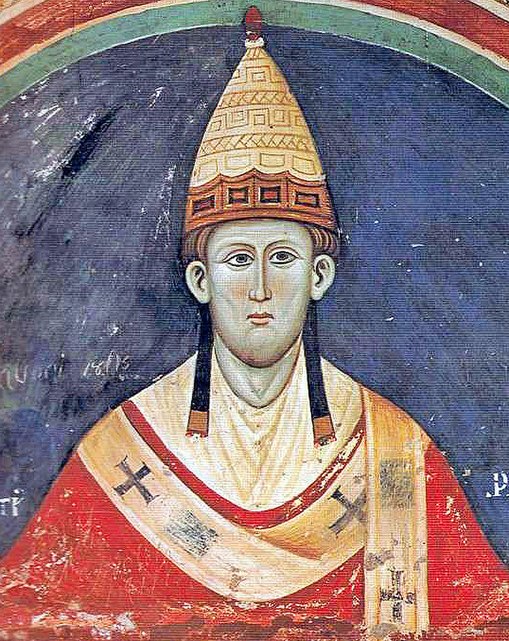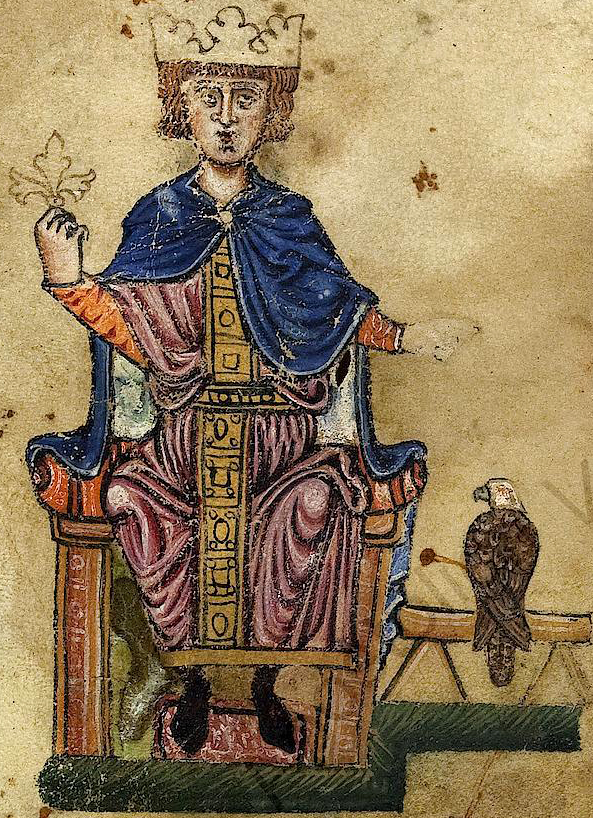 |
| Raymond of Toulouse |
The
popularity of a new religion in the south of France in the early years of the
thirteenth century, which had the support of the powerful Count of Toulouse, Raymond VI , resulted in Pope Innocent III calling for a crusade against the Cathars, or pure ones as they called
themselves. Innocent was determined to crush the Cathars, whose beliefs were
declared heretical, in order to maintain the supremacy of the church in Rome.
This
offshoot of Christianity had its roots in Albi and origins in Zoroastrian beliefs. The Cathars held that there were two gods, a
benevolent one in the spiritual realm and a malevolent one in the physical
world. Salvation depended on separating oneself from the flesh. It followed
that a church should not enrich itself. Cathars hated the cross, so important
to Christians, considering it blasphemous[i], and thought of the
Catholic mass as sacrilegious[ii].
Among the
Cathars themselves only a few of the believers, known as parfaits[iii]
led lives of extreme self-denial. The majority of believers, or credentes, relied upon taking the
sacrament of consolamentum[iv]
before death. Women parfaits were
given the same reverence as male parfaits.
‘Men may invent heresies but
it is women who spread them and make them immortal.’[v]
Toulouse had
been a stronghold of heretical beliefs for over one hundred years.
Responding to the Threat
The Pope was
determined that there was to be no deviation from the teachings of the church.
And he was horrified by attacks on the church’s wealth by the rising merchant
class in Languedoc, Lombardy and Provence. This wealth was also viewed with
antagonism by the nobility[vi] bringing both classes
into conflict with the church hierarchy.
The spread
of the new religion was also aided by the poverty of ideas in the priesthood
and the negligence of that priesthood in succouring their flocks. Contacts with
the Moors in Spain produced a climate of tolerance to other religions in
Provence and Languedoc.
St Dominic
The Cathars
had bishops in Albi, Toulouse, Carcassonne and Agen. Innocent was aware of the
problems within the Catholic church in the region and deposed seven bishops. He
also sent Dominic Guzman[vii], of Osma Cathedral, to convert the
Cathars; Dominic failed in his mission.
Innocent
called on the local magnate Raymond VI to take action against the Cathars, he
failed to do so, despite a promise in 1205. Innocent had written to Philip II, king of France on 10th March 1204
‘It is your responsibility
to harry the Count of Toulouse out of those lands which at present he occupies;
to remove this territory from the control of sectarian heretics; and to place
it in the hands of true Catholics who will be enabled, under your beneficent
rule, to serve Our Lord in all faithfulness.’[viii]
Philip II of France
Determined
to overthrow the Catholic church, in 1207 the Cathars in Carcassonne ejected
the Catholic bishop from the city. The Papal Legate Peter of Castelnau created a league of barons in the region to hunt down
heretics and Raymond was asked to join; this he refused to do.
Following a
meeting with Raymond VI, Peter was murdered by one of Raymond’s men on 15th
January 1208. Peter had already excommunicated Raymond for failing to join the
league and his lands placed under interdict;
‘He who dispossesses you
will be accounted virtuous, he who strikes you dead will earn a blessing.’[ix]
The murder
gave the Pope a causus belli to act against the heretics in the midst of
Christendom, and a war it was most certainly going to be.
Raising the Crusade
Innocent III
On 10th
March 1208 Innocent sent forth a call to Christendom asking for help in his
fight against the evils of Catharism.
The Cathars were accused of unnatural vices[x];
‘These heretics desecrated
Communion chalices and asserted that by receiving the Sacred Host one swallowed
a devil; they uttered blasphemies against the Saints, declaring that they were
all damned.’[xi]
The call was
accompanied by the promise of redistribution of the heretics’ property.
Frederick II
The King of
France demanded a declaration from the King of England that he would not attack
French domains if he joined the crusade. He was also wary of the intentions of
the German king, Frederick II, who was allied with Raymond VI.
Innocent wanted to use Philip as a secular agent of the church, in an attempt
to divert attention away from the fact that this was a war of religion.
‘It is to you that we
especially entrust the cause of God’s Holy Church. The army of the faithful
that is forming to combat heresy must have a leader to whom its members must owe
unquestioning obedience.’[xii]
It may also
be possible that Philip was wary of attacking Raymond VI, one of the major
French magnates, on his home ground. The fact that Raymond VI was related to
the French royal family probably did not enter into his calculations. The kings
of France were intent on bringing the whole of France under their control and
the Languedoc was, like Normandy before it, semi-autonomous. For Philip the
prize would be, not the crushing of the Cathars, but the crushing of the power
of the counts of Toulouse and the nobility of the region and bringing it under
his direct control.
Franks against Franks
In June 1209
Raymond VI was scourged and became solemnly reconciled with the church in the
presence of three archbishops and at least nineteen bishops. The army, that was
to descend upon his lands and peoples, was ready to march. Raymond decided to
join the invading crusader army, thus protecting his own lands[xiii]. The church had no time
to lose[xiv].
The Cathars,
these crusaders were about to fight, had taken no precautions since the demand
for assistance by Innocent III in March the previous year. There was no
agreement amongst the Cathars about how to respond to the threat, apart from
offers of submission. They probably did not realise that the war, about to
descend upon them, was a war of eradication not conquest. Raymond VI wrote to
his nephew Raymond-Roger, the Count of Béziers, begging him
‘Not to make war upon him,
not to quarrel with him; let both stay on the defensive.’[xv]
Notwithstanding
the centuries old history of strife between the two families.
A Quick Campaign
In early
July the crusaders marched towards Languedoc under the leadership of the Papal
Legate Arnald-Amalric, Abbot of Cîteaux. Not all the
soldiers were crusaders, the church was also employing mercenaries.
In Valence
the crusade was joined by Raymond VI and his men and they reached Montpellier
by the 20th. They were now just fifteen leagues from Béziers, one of
the major cities of the region. The crusaders besieged and sacked the city and massacred
the inhabitants.
The will of
their opponents was paralysed by the atrocities visited upon the city. The head
of the Cathars defending troops was the city’s count. He had not stayed to be
caught in the inevitable siege, but hurried to his capital at Carcassonne. When
the crusading army arrived outside the walls of Carcassonne Raymond-Roger
called upon his liege lord Peter II, the king of Aragon, for assistance.
Arnald-Amalric[xvi] agreed that, as the
Viscount was innocent, he and twelve of his knights would be granted
safe-conduct out of the city. The remainder of the citizens would be treated as
they deserved. The siege commenced. At this point, Raymond-Roger panicked and
according to one account offered himself as a hostage, as long as the citizens
of Carcassonne were allowed to go free.
Another
version says that the Viscount of Béziers, having been given the safe-conduct, was
tricked into attending a meeting with the Papal Legate; he said of himself.
‘He had given himself up as
a hostage of his own free will, and had been out of his mind to do so.’[xvii]
He was dead
by the 10th November, dying in his own dungeons of either poisoning
or dysentery. The loss of their commander gave the people of Carcassonne little
choice but to surrender. They left their homes and possessions to the rapacity
of the crusaders. Within ten days of Raymond-Roger’s death his wife agreed to
dispossess her two year old son receiving a lump sum and annuity[xviii].
The Cathars expelled from Carcassonne
It took
barely two months to dispossess the Viscount of Béziers and eradicate two of
the Cathar strongholds. The crusaders were jubilant.
Mopping up the Pieces
Raymond-Roger’s
lands were now hawked around potential leaders of the next phase of the crusade,
as Arnald-Amalric looked for a good Catholic to be overlord in the region. As
Raymond-Roger had not been found guilty of heresy, the nobles amongst the
crusaders were uneasy at this casual dispossession of Raymond-Roger’s son.
‘No-one could fail to feel
himself dishonoured by accepting these domains.’[xix]
The Duke of
Burgundy, the Count of Nevers and the Count of Saint-Pol are reputed to be
among those who turned down the offer from the Papal Legate. Eventually it was
a man with few lands of his own[xx] who accepted the task of
expanding the terror amongst the remainder of the Cathar infected territories.
That man was Simon de Montfort, who was elected Captain-General of the
crusaders in 1209.
De Montfort,
a friend of Dominic Guzman of Osma[xxi] and himself a devout
follower of the church, now set about bribing those he would need to rely in
the coming war. He placed garrisons in all the major towns and raised a levy
from each household of three deniers as his personal
tribute to the pope.
The army,
that had brought success to the church’s crusade, now split up to go their
separate ways as all the crusaders had fulfilled their forty days service. By
September 1209 de Montfort was left with just twenty-six knights to prosecute a
war that had only just begun.
Bibliography
Massacre at
Montségur – Zoe Oldenbourg, Weidenfeld & Nicholson 1989
Saint Louis
– Frederick Perry, AMS Press Inc, 1978
The
Thirteenth Century – Sir Maurice Powicke, University of Oxford Press 1988
The Templars
– Piers Paul Reid, Weidenfeld & Nicholson 2000
The Monks of
War – Desmond Seward, the Folio Society 2000
King John –
WL Warren, Yale University Press 1997
www.wikipedia.en
[i]
The cross depicted suffering divinity
[ii]
Because of the claim that the bread became the body of Christ
[iii]
Also known as the Bonhommes or perfecti; they did not eat food of animal origin
[iv]
Which washed away sin
[v]
The Templars - Reid
[vi]
Many of whose ancestors had given lands and monies to the church
[vii]
Later Saint Dominic, founder of the order of Dominican Monks
[viii]
Massacre at Montségur - Oldenbourg
[ix]
Ibid
[x]
A stock in trade accusation freely bandied about for perceived enemies of the
church, including the Templars over a century later.
[xi]
Massacre at Montségur - Oldenbourg
[xii]
Ibid
[xiii]
A crusader’s lands were inviolable
[xiv]
Crusaders only had to follow the Cross for forty days of active service
[xv]
Massacre at Montségur - Oldenbourg
[xvi]
A churchman who appeared to have little sympathy for those not in complete
agreement with him
[xvii]
Massacre at Montségur - Oldenbourg
[xviii]
25,000 Melguil sous as a lump sum and 3,000 livres annuity
[xix]
Ibid
[xx]
His lands in Leicester having been seized by King John
[xxi]
Who in turn was a friend of Francis of Assisi





No comments:
Post a Comment
Note: only a member of this blog may post a comment.